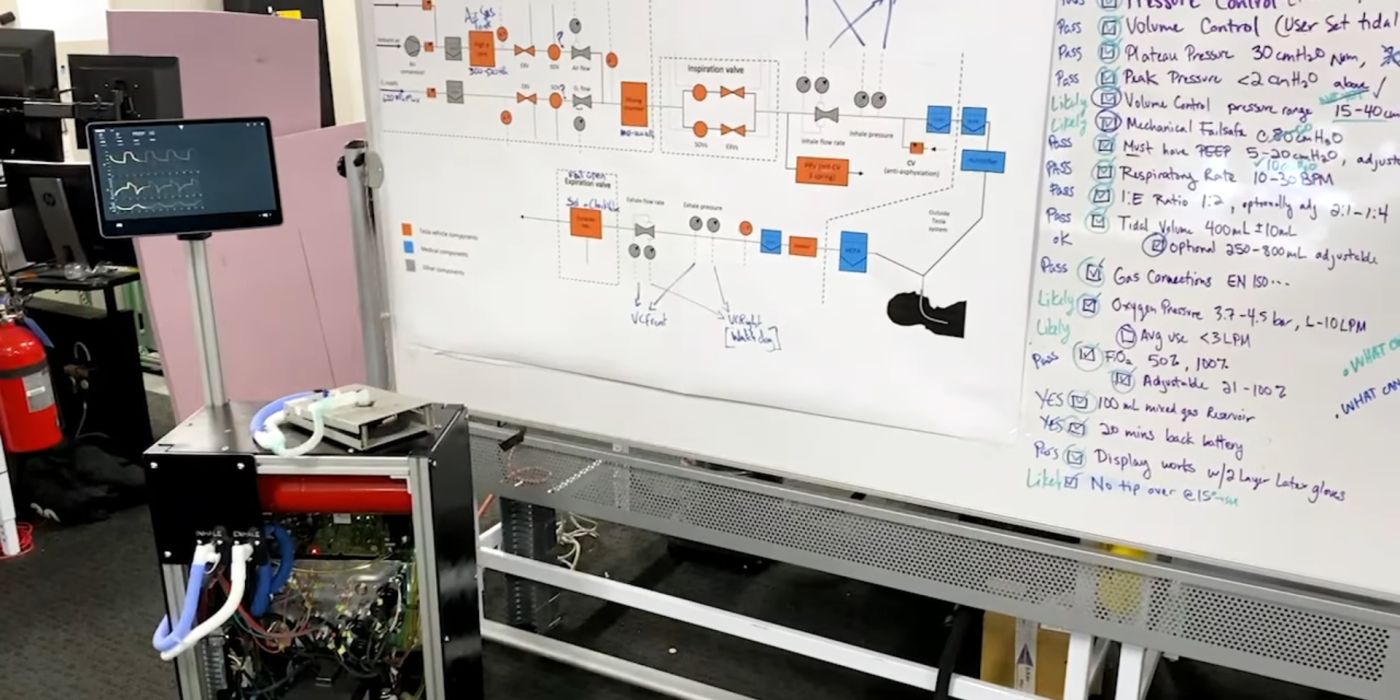The innovative automotive engineers at Tesla are using car parts to confront their task of creating ventilators to help hospitals treat coronavirus patients. If the idea proves successful, the engineers should save both time and money that would have otherwise been spent attempting to source materials vehicle manufacturing facilities would not normally have available.
Tesla’s involvement in the coronavirus relief effort has been both a source of optimism and confusion. The company’s famous founder, Elon Musk, has made several troubling statements about the virus, starting with comments on Twitter downplaying the dangers of COVID-19. In recent weeks, he’s seemingly reversed course and has publicly committed resources to the fight against the pandemic. Among those pledges were a promise to begin building ventilators in Tesla’s manufacturing facilities, and today we’re seeing the first glimpses of that goal in action.
The Tesla YouTube channel posted a video of a group of engineers explaining part of their building process. The team shows off some of their prototypes, along with a whiteboard of schematics, highlighting just how many steps in their design use actual Tesla vehicle parts. The video also shows working prototypes, both in a basic, impractical form set up just show how the machine functions, and in a more compact form that’s easier to imagine existing in a hospital. The team mentions their next steps involve making sure the ventilators are easy for medical teams to assemble and use after shipping.
How Tesla’s Ventilators Use Car Parts

While there wasn’t a massive amount of detail in the clip, the team was able to show a few innovative ways it’ll use Tesla parts. The simplest use case was the screen from the Tesla Model 3 vehicle’s dashboard being used as a monitor to check a patient’s breathing patterns. The engineer demonstrated, in real-time, how the EKG-like graphs on the Model 3’s monitor would fluctuate to indicate disruptions in the oxygen flow. The system uses the Model 3’s infotainment computer, which controls the car’s vehicle functions, to give the user more ways to manipulate the ventilator’s function. Additionally, airflow is piped through the same mixing chambers seen on Tesla’s vehicles and then monitored through the same sensors as well.
The team seemed enthusiastic about the task at hand, despite wearing masks that hid their expressions. It’s hard to say when a prototype will begin real-world testing, but, based on what’s in the video, the basic functions are already in place. Like most Tesla prototypes, it’s not exactly pretty right now, but it is effective. We may not be far from being able to say a Tesla saved people from the coronavirus.




